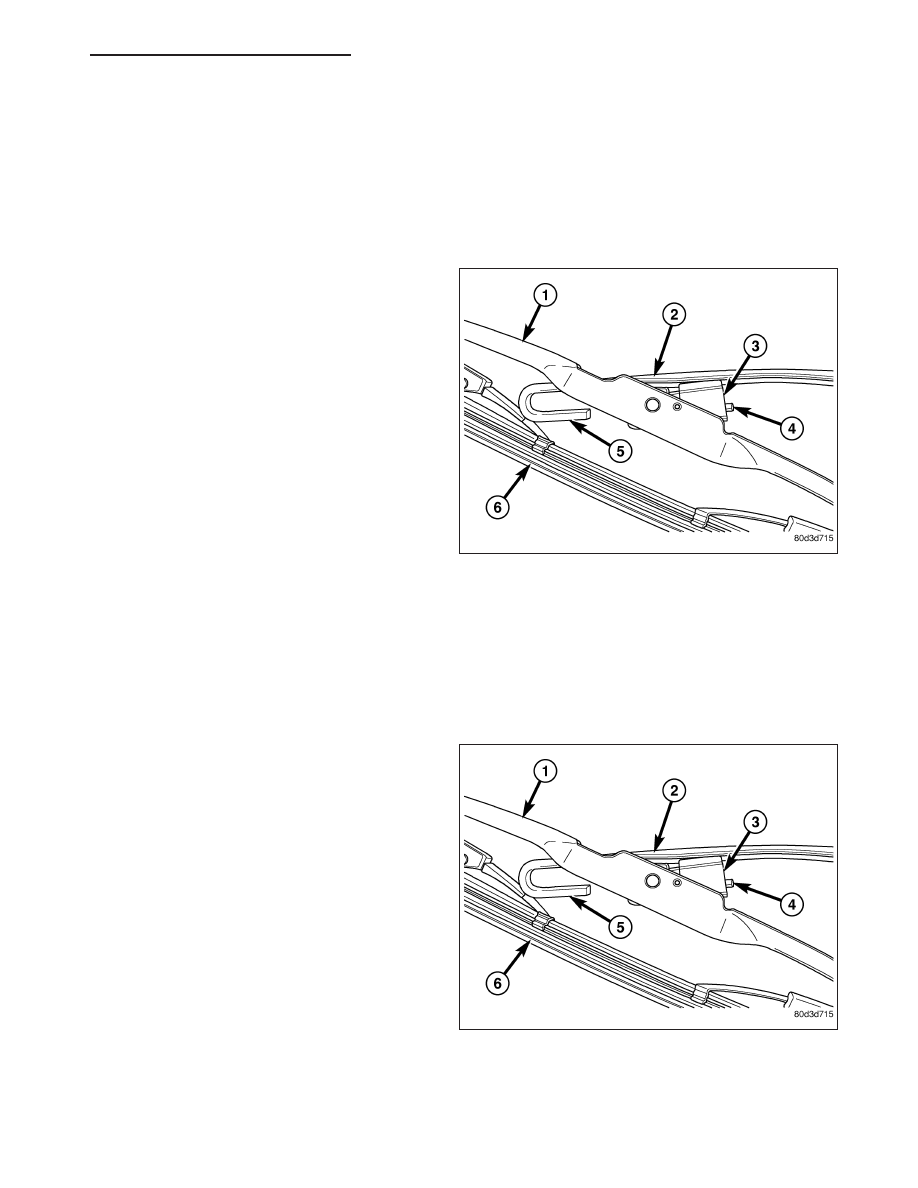Dodge Durango (HB). Manual - part 605

The wiper element flexor provides the claws of the blade superstructure with a rigid, yet flexible component on the
element which can be gripped. The rubber element is designed to be stiff enough to maintain an even cleaning
edge as it is drawn across the glass, yet resilient enough to conform to the glass surface and flip from one cleaning
edge to the other each time the wiper blade changes directions.
REMOVAL
CAUTION: Do not allow the wiper arm to spring back against the glass without the wiper blade in place or
the glass may be damaged.
NOTE: The notched end of the wiper element
flexor should always be oriented towards the end
of the wiper blade that is nearest to the wiper
pivot.
1. Lift the wiper arm (2) to raise the wiper blade and
element (6) off of the glass, until the wiper arm
hinge is in its over-center position.
2. To remove the blade from the arm, depress the
latch release tab (4) on the pivot block (3) under
the tip of the arm and slide the blade away from
the tip towards the pivot end of the arm far enough
to disengage the pivot block from the hook forma-
tion (5) on the end of the arm.
3. Extract the hook formation on the tip of the wiper
arm through the opening in the wiper blade super-
structure (1) just ahead of the pivot block.
4. Gently lower the tip of the wiper arm onto the glass.
INSTALLATION
CAUTION: Do not allow the wiper arm to spring back against the glass without the wiper blade in place or
the glass may be damaged.
NOTE: The notched end of the wiper element
flexor should always be oriented towards the end
of the wiper blade that is nearest to the wiper
pivot.
1. Lift the wiper arm (2) off of the windshield glass,
until the wiper arm hinge is in its over-center posi-
tion.
2. Position the wiper blade near the hook formation
(5) on the tip of the arm with the notched end of
the wiper element flexor oriented towards the end
of the wiper arm that is nearest to the wiper pivot.
3. Insert the hook formation on the tip of the arm
through the opening in the blade superstructure (1)
ahead of the pivot block (3) far enough to engage
the pivot block into the hook.
4. Slide the pivot block up into the hook formation on the tip of the wiper arm until the latch release tab (4) snaps
into its locked position. Latch engagement will be accompanied by an audible click.
5. Gently lower the wiper blade and element (6) onto the glass.
HB
FRONT WIPERS/WASHERS - SERVICE INFORMATION
8R - 43